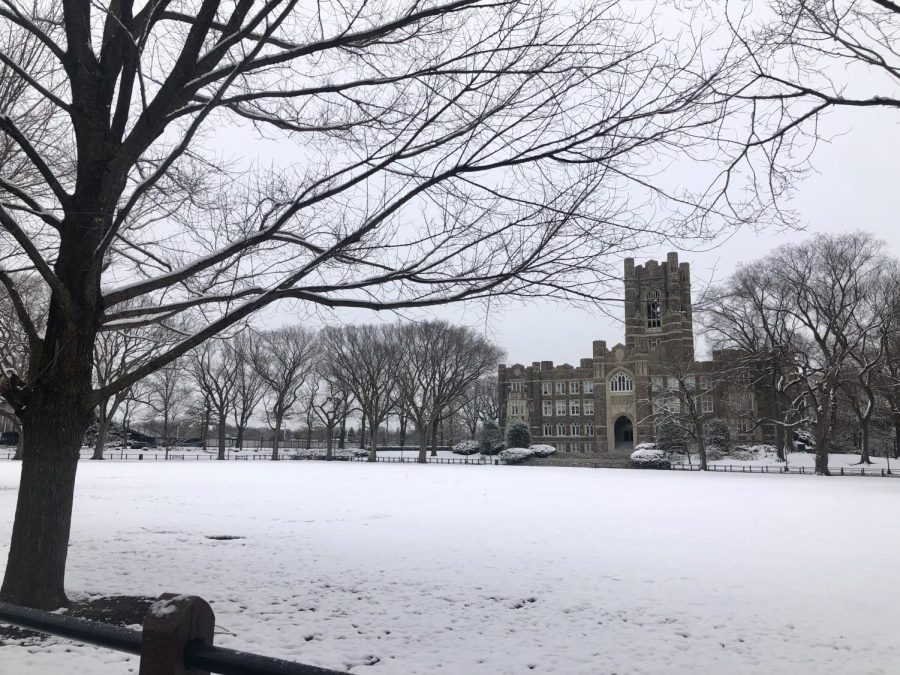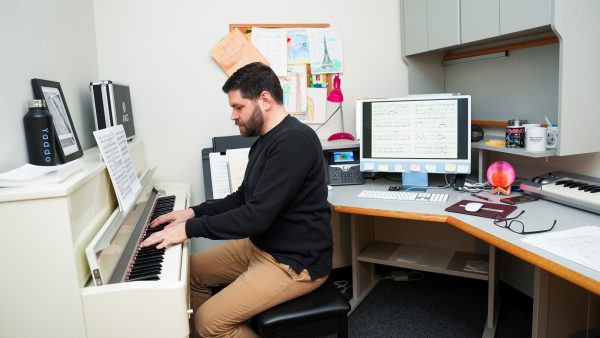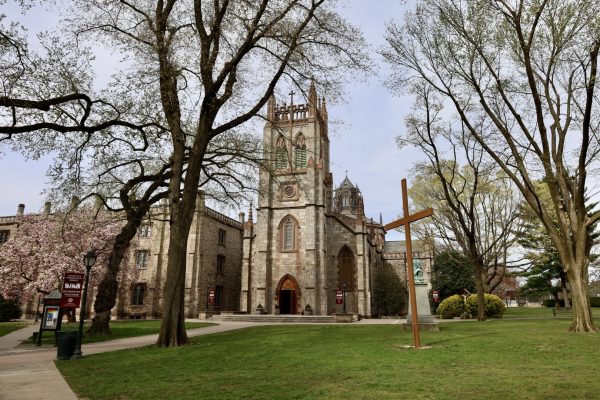A Look at Fordham’s Weather Preparedness
On Feb. 4, Fordham University closed its campuses and canceled all in-person events after 1 p.m. due to the potential threat of freezing rain. While campus closures due to weather conditions are not necessarily uncommon, especially during the winter months, Fordham has been hit with many of these closures during the 2021-22 academic year.
In fall 2021, the university experienced several instances of severe weather that caused both damage to facilities and campus closures. Hurricane Ida, which occurred in September 2021, was the university’s first major weather event of the year.
The hurricane caused flooding and minor damage to some campus buildings. The Walsh Family Library sustained the most significant damage. This became the first instance of the 2021-22 school year in which Fordham had to shut down its facilities due to severe weather patterns. Fordham’s campus closed again on Oct. 26 due to an aggressive storm that hit New York which caused additional water damage and flooding. In total, the Fordham area received 4.73 inches of rainfall that day, and the National Weather Service issued a flash flood warning to New York City. Associate Vice President for Fordham’s Public Safety Robert Fitzer commented on the recent weather events, saying: “I believe that the frequency of extreme [weather] events has increased in the last few years. Weather patterns and climate change deserve consideration in these events.”
Now that the winter season has arrived and Fordham officially opted for fully in-person learning this semester, there is still a question of whether the university and Public Safety is prepared for the season’s weather risks. Public Safety frequently works with their colleagues in Facilities to keep up with the maintenance of all campus facilities and conducts preventative inspections to ensure the safety of these facilities throughout the year.
Public Safety and Facilities are always changing and adapting their weather preparedness measures to respond more effectively to any type of emergency. Public Safety has recently subscribed to a weather service that gives them access to a meteorologist to receive specific and timely weather updates for their specific locations. This subscription also allows them to access traffic cameras which provides them with real-time travel conditions regionally.
When there are speculations of a weather event occurring or even on a regular basis, weather information from sources such as the National Weather Service and NYC Department of Emergency Management are carefully monitored by Public Safety, and they receive information from the MTA and regional railroads for transportation delays.
Fitzer makes the final decision on taking actions, like closing campus, but he also convenes with an Emergency Management meeting to collaborate with faculty, administrators and facility personnel to ensure the preparedness of the university. “The safety of our community members is the paramount determining factor in closing the university,” said Fitzer, “The dedicated Public Safety, facility, grounds and custodial staff work throughout the day and night to ensure that the campus is ready for the classes and events as soon as possible and is safe for all our community members.”










































































































































































































